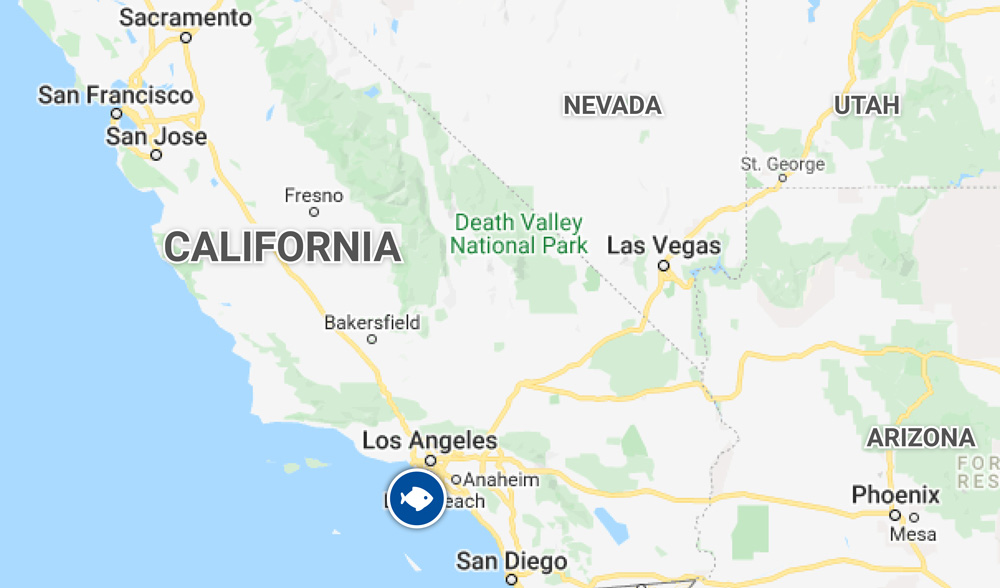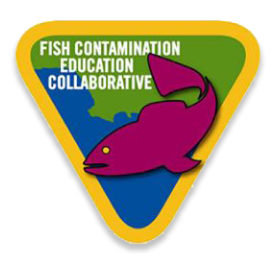
Who we are
We are the Fish Contamination Education Collaborative (FCEC).
Since 2003, we have been working to protect the most vulnerable populations in Southern California from the health risks of consuming fish contaminated with dichloro-diphenyl-trichloroethane (DDT) and polychlorinated biphenyls (PCB) off the Palos Verdes Shelf Superfund site, one of the largest contaminated sediment sites in the nation. As a part of USEPA’s Institutional Controls (ICs) program, We work in conjunction with monitoring programs and enforcement efforts to address human health risks posed by fish contamination.
Through outreach to affected communities, anglers and businesses, FCEC provides education on the dangers of consuming contaminated fish, as well as recommended portioning and preparation guidelines.
The Palos Verdes Shelf
The Palos Verdes Shelf, located off the coast of Los Angeles, California, is among the largest contaminated sediment sites in the United States.

History
The contamination is a result of decades of DDT and PCB discharge into the Los Angeles County sewer system, which eventually emptied into the ocean off the Palos Verdes Peninsula.
Although these chemicals are no longer in use and DDT and PCBs were banned in the US in 1972 and 1979, respectively, they remain in the ocean sediment extending into Santa Monica Bay and the Los Angeles/Long Beach Harbors, with the highest concentration located off the Palos Verdes Peninsula. These chemicals have made their way into fish off the coast of Los Angeles and Orange Counties. People are exposed to the chemicals when they catch and eat these fish. In addition, some of the contaminated fish have appeared in local markets for consumer purchase.
To address the disproportionate exposures to harmful chemicals faced by anglers and their families who catch and consume fish from the Los Angeles and Orange County Coasts, as well as various communities who are exposed to contaminated fish, US EPA developed the Fish Contamination Education Collaborative as a part of the Institutional Controls program.
1943
Montrose Chemical Company began discharging more than 100 tons of DDT into the Los Angeles County sewer system between 1943 and 1983.
Between 1943 and 1983, the Montrose Chemical Company, located near the city of Torrance, released more than 100 tons of the pesticide DDT into the sewer system, which eventually emptied into the ocean around the Palos Verdes Peninsula. When DDT was found to be harmful to both human health and wildlife, manufacturing of the chemical was banned in the United States. Polychlorinated biphenyls (PCBs), another group of chemicals, were also released by local industries.
1959
Usage of DDT in the United States reached its peak as 80 million pounds of the pesticide were used during this year.
1972
The Environmental Protection Agency (EPA) issued an order making the pesticide DDT illegal.
An end to the continued domestic usage of the pesticide was decreed on June 14, 1972, when William D. Ruckelshaus, Administrator of the EPA, issued an order finally canceling nearly all remaining Federal registrations of DDT products. Public health, quarantine and a few minor crop uses were exempt, as well as export of the material. The effective date of the EPA June cancellation action was delayed until the end of 1972 to permit an orderly transition to substitute pesticides, including the joint development with the U.S. Department of Agriculture of a special program to instruct farmers on safe use of substitutes.
1983
The Montrose Chemical company ceased production of DDT, eleven years after the EPA banned the pesticide from use in the United States.
1985
The State of California issued an interim seafood consumption advisory, which included a "do not eat" recommendation for white croaker caught in the Palos Verdes Shelf area.
High levels of DDTs and PCBs were found in white croaker, partly because they feed off the bottom of the ocean floor where the chemicals are located. White croaker is a fatty fish, and DDTs and PCBs tend to build up in fatty tissues. The interim advisory also recommended limited consumption of several other fish caught in the Palos Verdes Shelf area.
1989
The EPA added the 13-acre Montrose Chemical site, located near Torrance, California, to the Superfund National Priorities List (NPL).
1990
The United States and the State of California filed a lawsuit against ten facilities citing damages to the marine environment near the Palos Verdes Peninsula; California issued commercial fishing ban for white croaker.
Federal and state natural resource trustees charged that discharges of DDTs and PCBs had injured natural resources, including fish and wildlife that live in and around coastal waters in Southern California. Four of the ten companies either owned or operated DDT-manufacturing plants in Los Angeles County. These companies were Montrose Chemical Corporation of Californa, Aventis CropScience USA Inc., Chris-Craft Industries Inc., and Atkemix Thirty-Seven Inc.
Based on fish consumption advisories issued by the state Office of Environmental Health Hazard Assessment (OEHHA), the state Department of Fish and Game closes commercial fishing for white croaker in waters near the Palos Verdes Peninsula due to health risks posed by the DDT and PCB contamination. Commercial fishing for other species continues.
1991
State issued final seafood consumption advisory.
1994
The Natural Resource Trustee agencies released the Southern California Bight Natural Resource Damage Assessment expert reports, which provided a detailed site characterization and discuss the impacts the contaminated sediment has had on the marine ecosystem.
1996
The EPA began an investigation to evaluate the need for and feasibility of cleaning up the DDT- and PCB-contaminated sediments on the ocean floor off the Palos Verdes Peninsula.
1998
State set daily limit for white croaker.
In March 1998 the California Department of Fish and Game (CDFG) established a 10 fish daily bag and possession limit for the sport take of white croaker. The bag limit was established because the CDFG had documented a problem with the commercial sale of sport-caught white croaker in Los Angeles and Orange Counties. Before the bag limit, sport anglers could take as many white croaker as they wished. Some of these sport angelers sold their catch in violation of the law. CDFG also found that much of the white croaker being sold illegally was taken from waters where the health advisory recommends no consumption of white croaker.
1999
EPA initiated pilot outreach and education project--the precursor to the Fish Contamination Education Collaborative.
From July 1999 to December 2000, the Environmental Health Investigations Branch of the California Department of Health Services (CDHS-EHIB) carried out a pilot public outreach and education program regarding Palos Verdes Shelf fish contamination issues. The program developed a fish contamination discussion forum, produced materials, educated communities, disseminated information at county health departments, held training workshops for community-based organizations (CBOs) and assisted CBOs in developing projects aimed at increasing awareness of fish contamination in Los Angeles and Orange counties.
2000
The EPA completed Engineering Evaluation/Cost Analysis (EE/CA) report for the Palos Verdes Shelf, summarizing site risks and potential cleanup plans; EPA began a pilot capping project.
The EPA proposed an interim plan, called the Institutional Controls Program, to reduce human health risks via public outreach, enforcement and monitoring.
EPA conducted a pilot capping project in 2000 in a small area of the site to evaluate cap placement methods and short-term impacts of cap construction. When evaluated in 2002, EPA came to a number of conclusions, including that the construction of a clean cap over the sediment site was feasible and minimally disturbed the contaminated sediment.
2001
The United States settled legal claims against Montrose Chemical Corporation and other defendants; EPA issued an Action Memorandum establishing Institutional Controls to address health risks associated with consumption of contaminated fish from the Palos Verdes Shelf.
As part of the Institutional Controls program, EPA, working with state, local and community-based organizations, pursued the following:
- Public Outreach and Education: increasing awareness of existing health advisories
- Monitoring contaminant levels in fish: evaluating and tracking contaminant levels in fish caught near the site, as well as suspect fish sold at markets
- Enforcement: promoting compliance with the commercial fishing ban and recreational catch limit for white croaker
2002
EPA and the Montrose Settlements Restoration Program (MSRP) initiated a monitoring program for fish in the ocean.
The EPA and MSRP (the group of federal and state agencies responsible for the restoration of natural resources and improvements of fishing opportunities impaired by the DDT and PCBs released off the Southern California Coast) initiated a comprehensive ocean fish sampling effort in Fall 2002 to assess fish contamination levels in the Southern California coast area. The results of the study were released in August 2007, and found that DDT and PCB contamination levels were higher in fish caught in the Palos Verdes and San Pedro Bay areas.
2003
EPA began a full-scale implementation of public outreach and education program, through FCEC, in partnership with other federal, state and local agencies and community based organizations.
